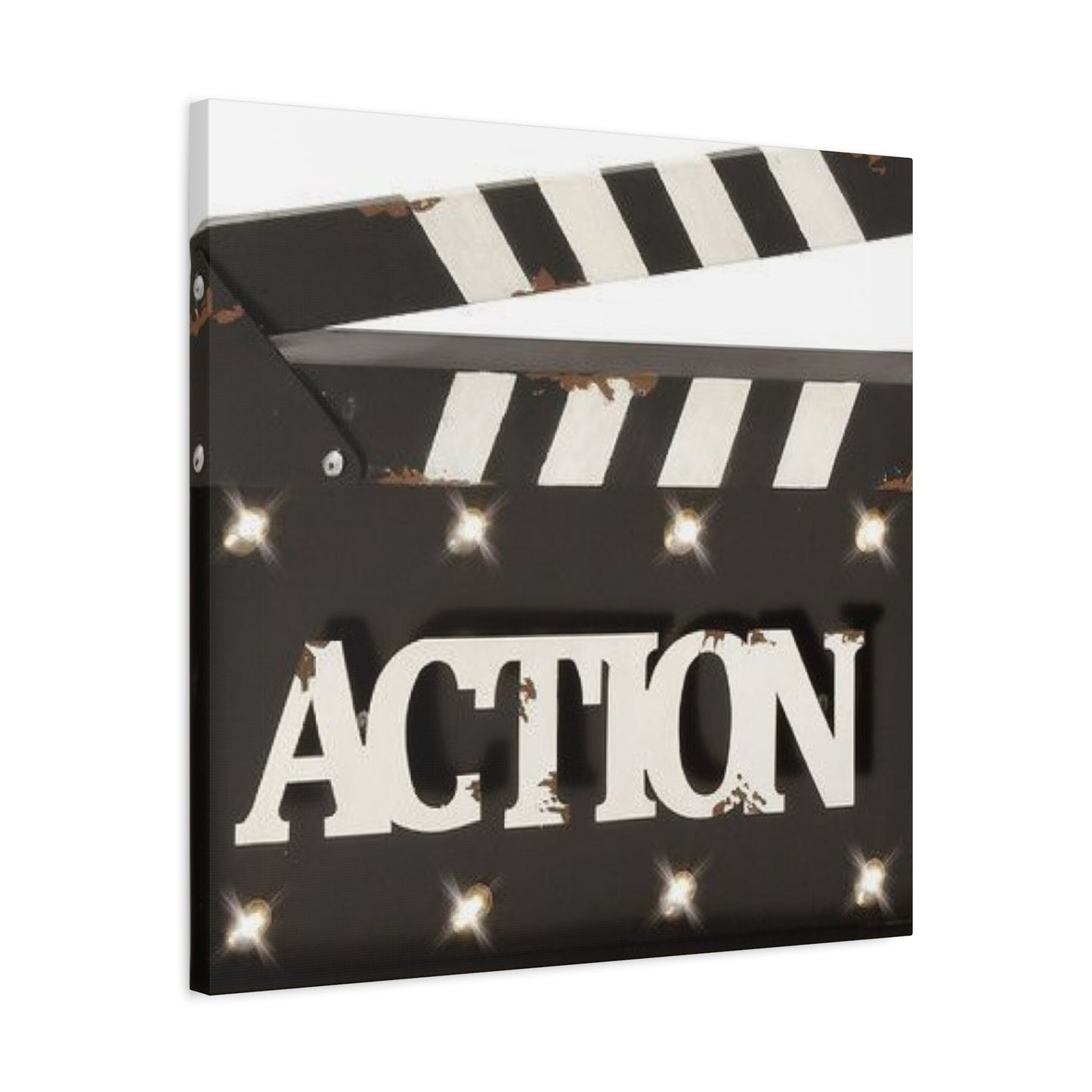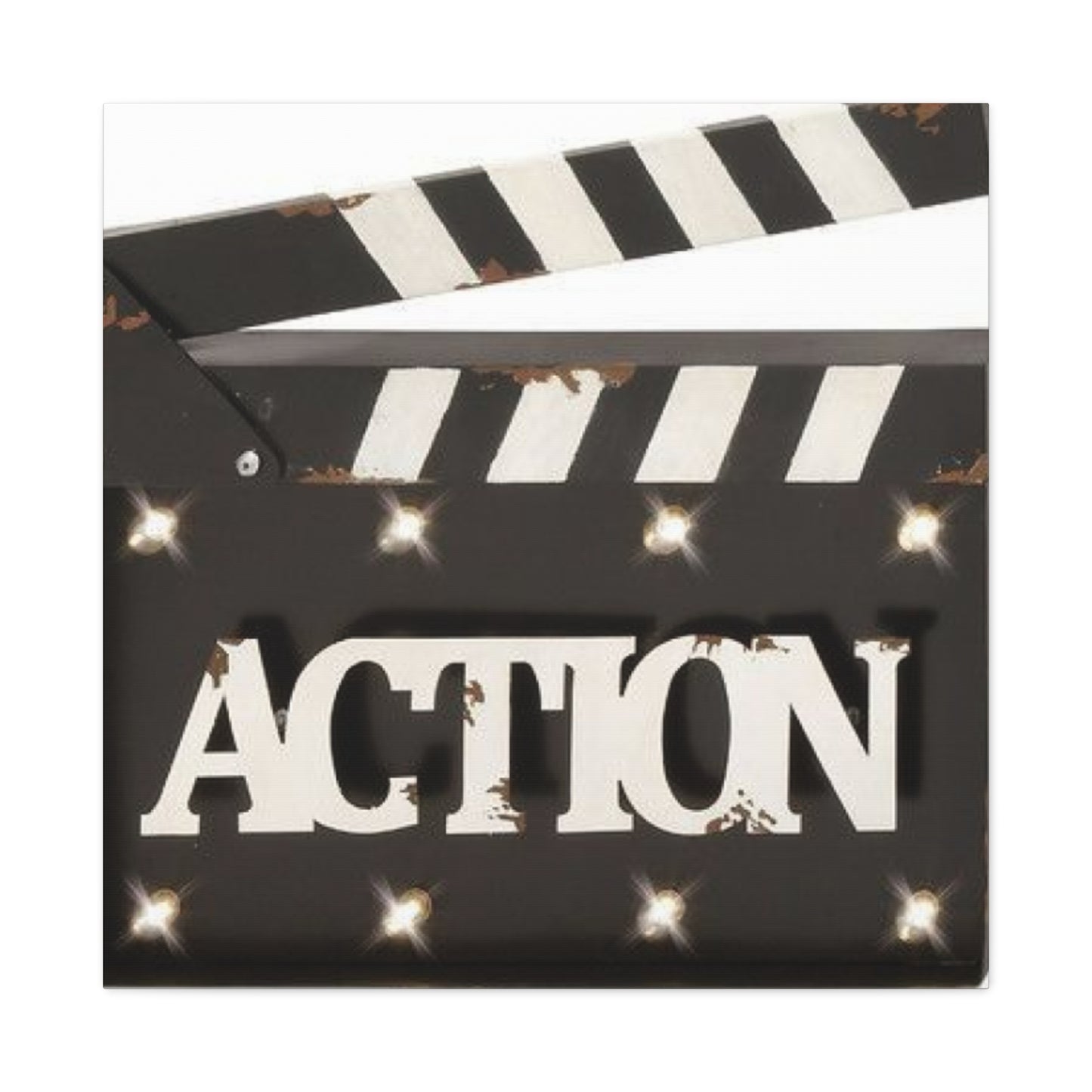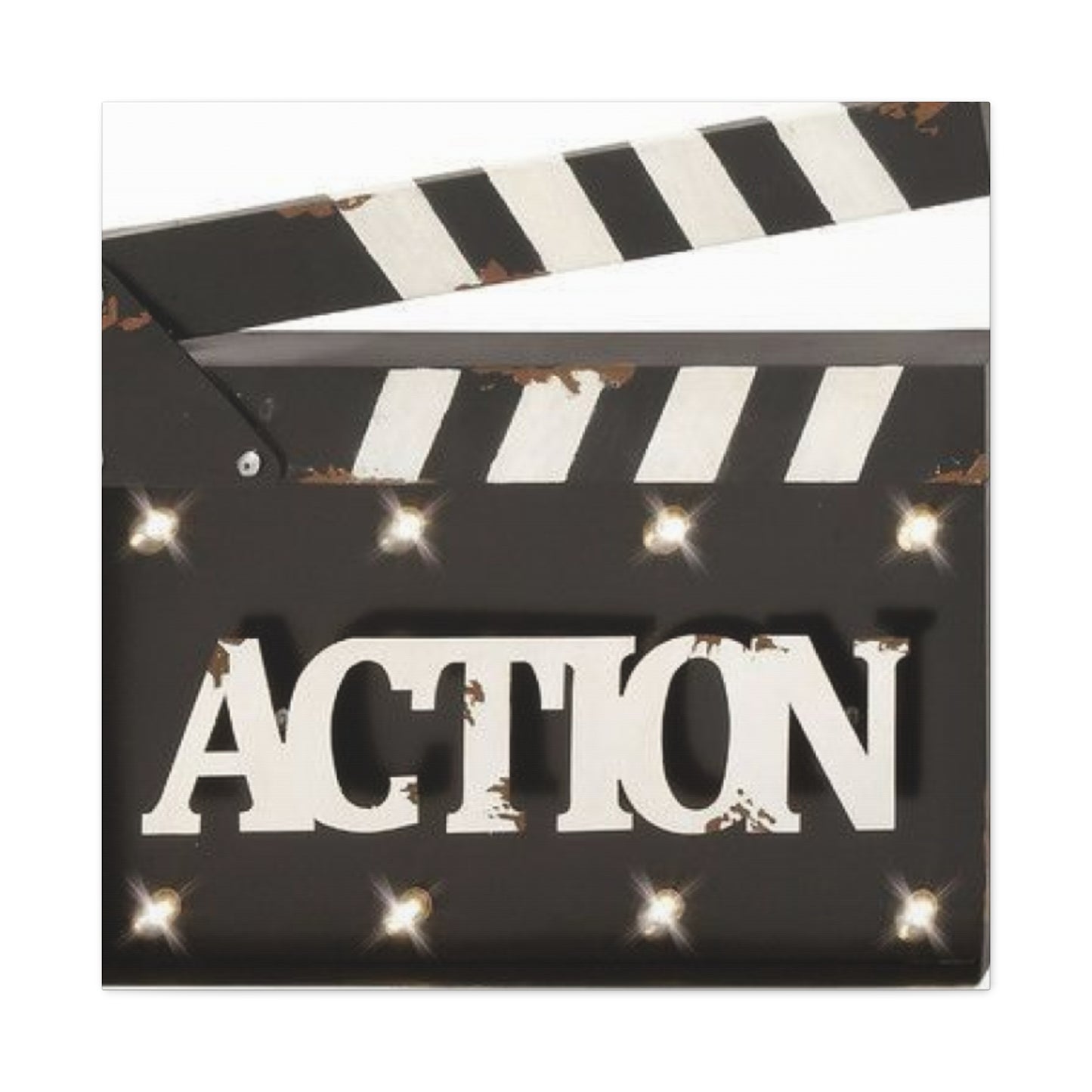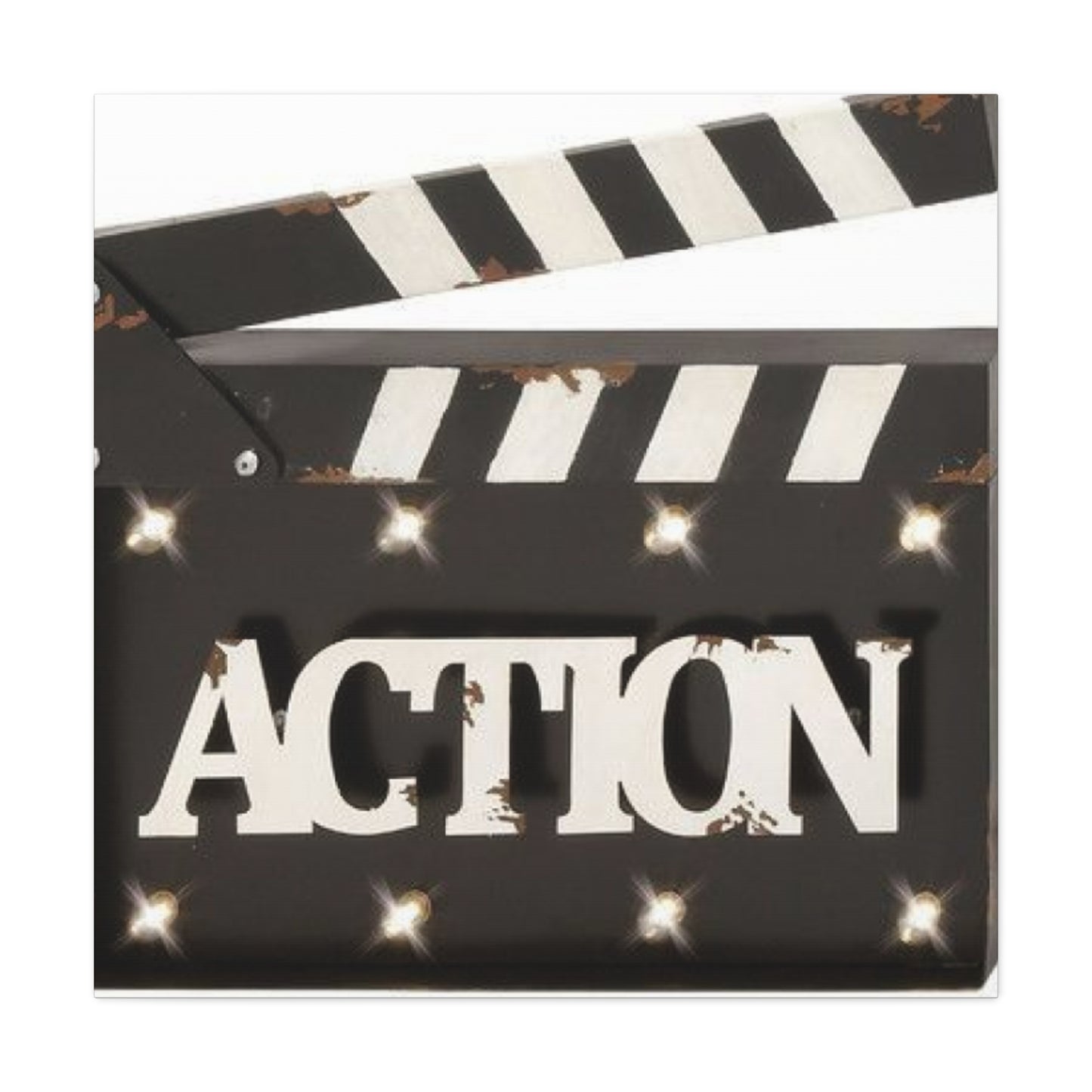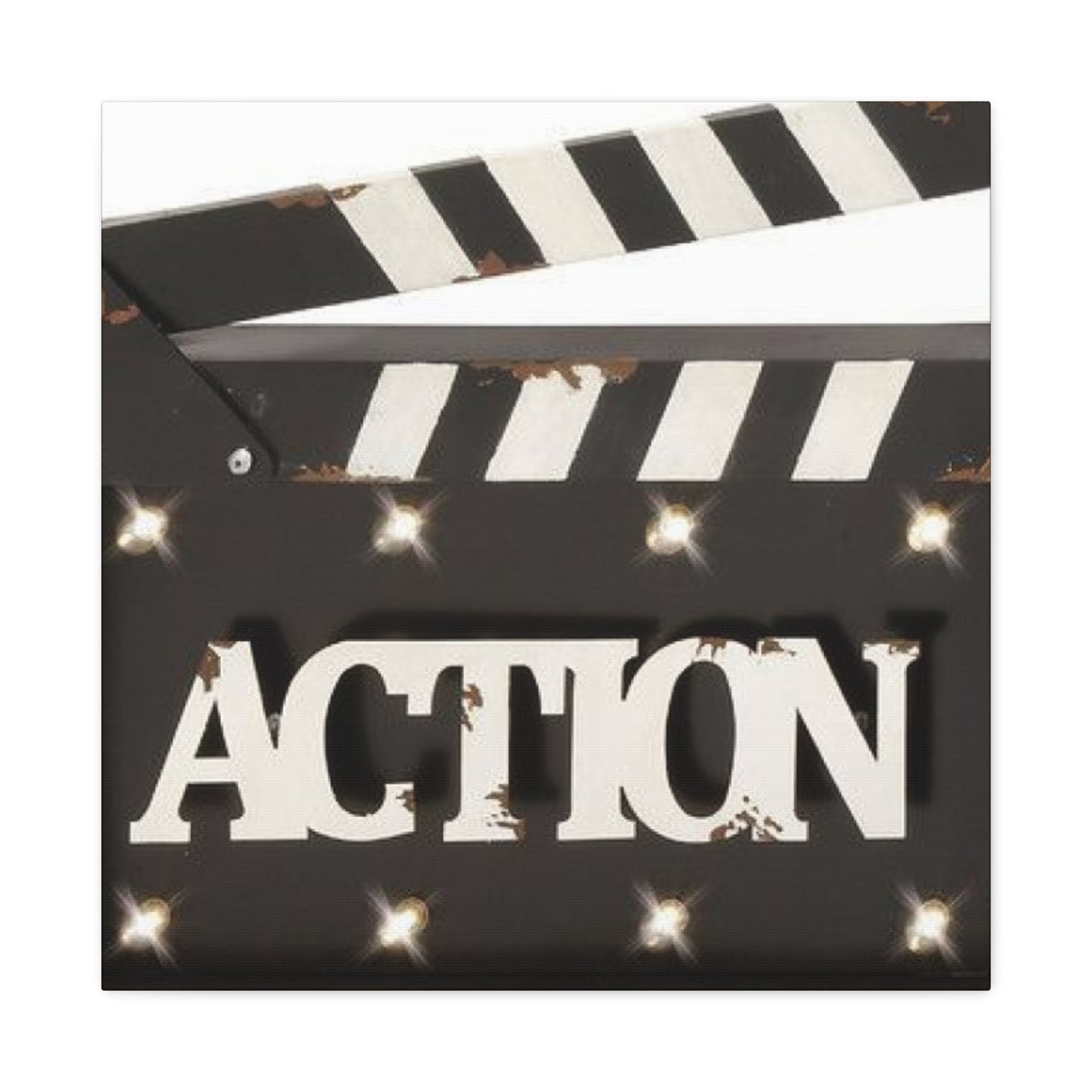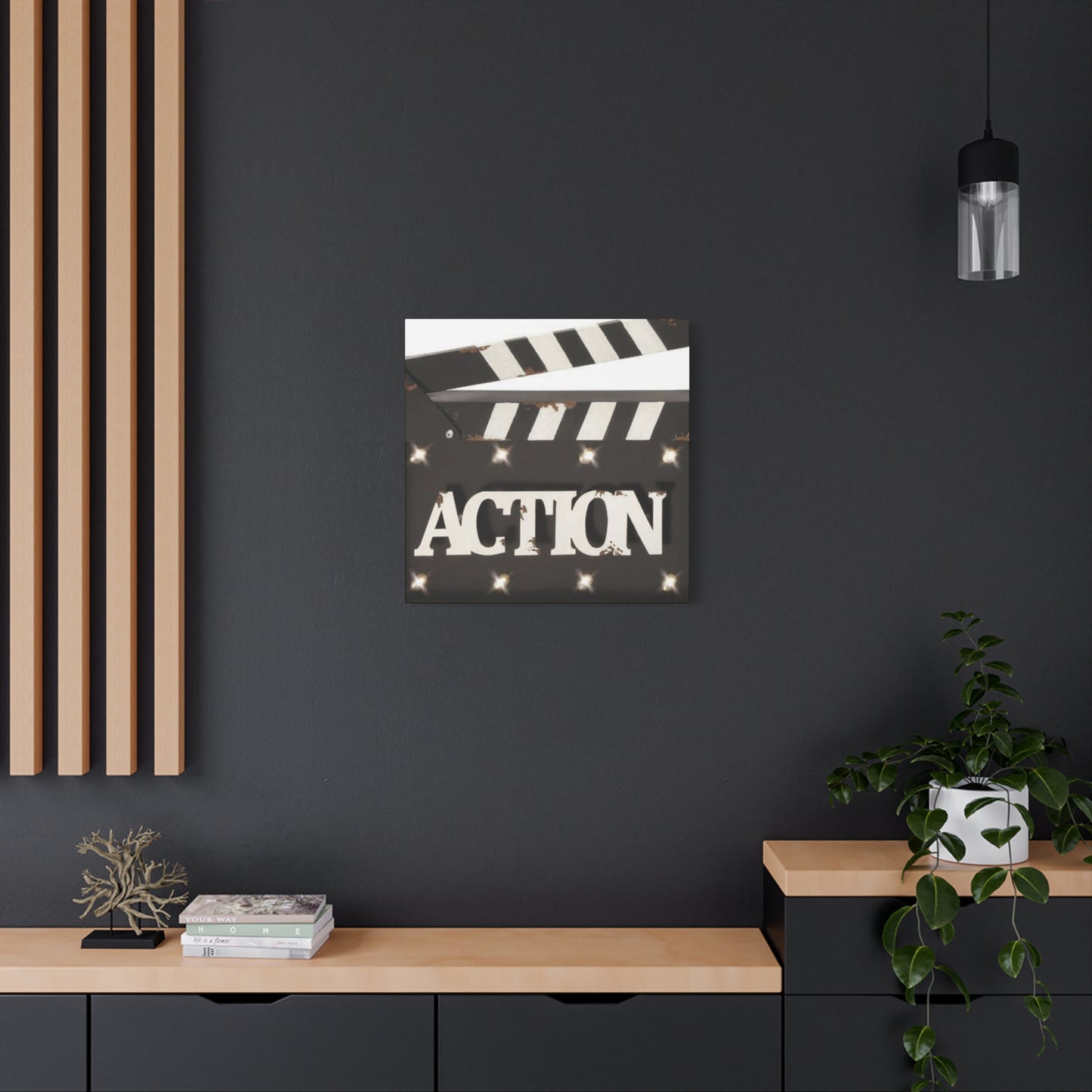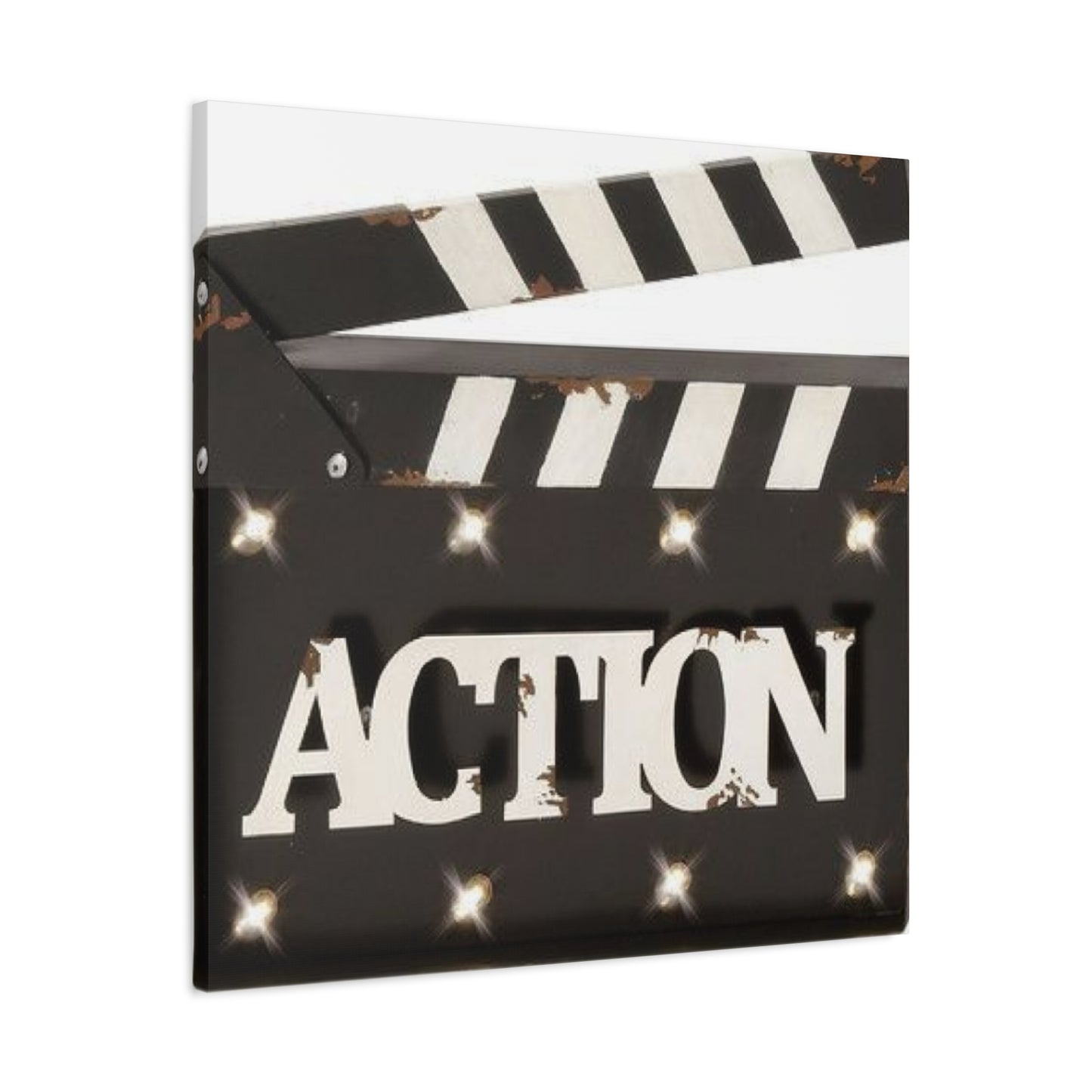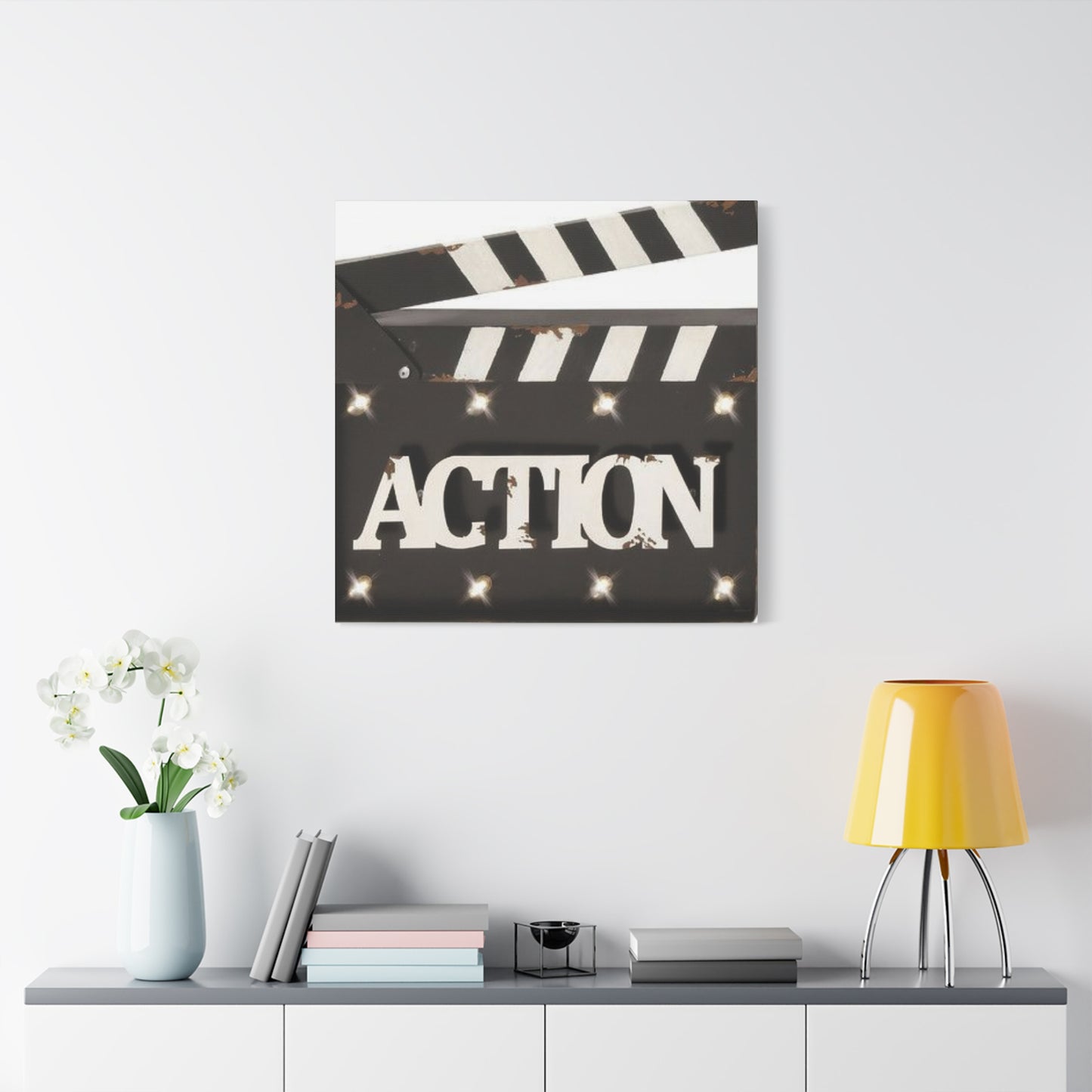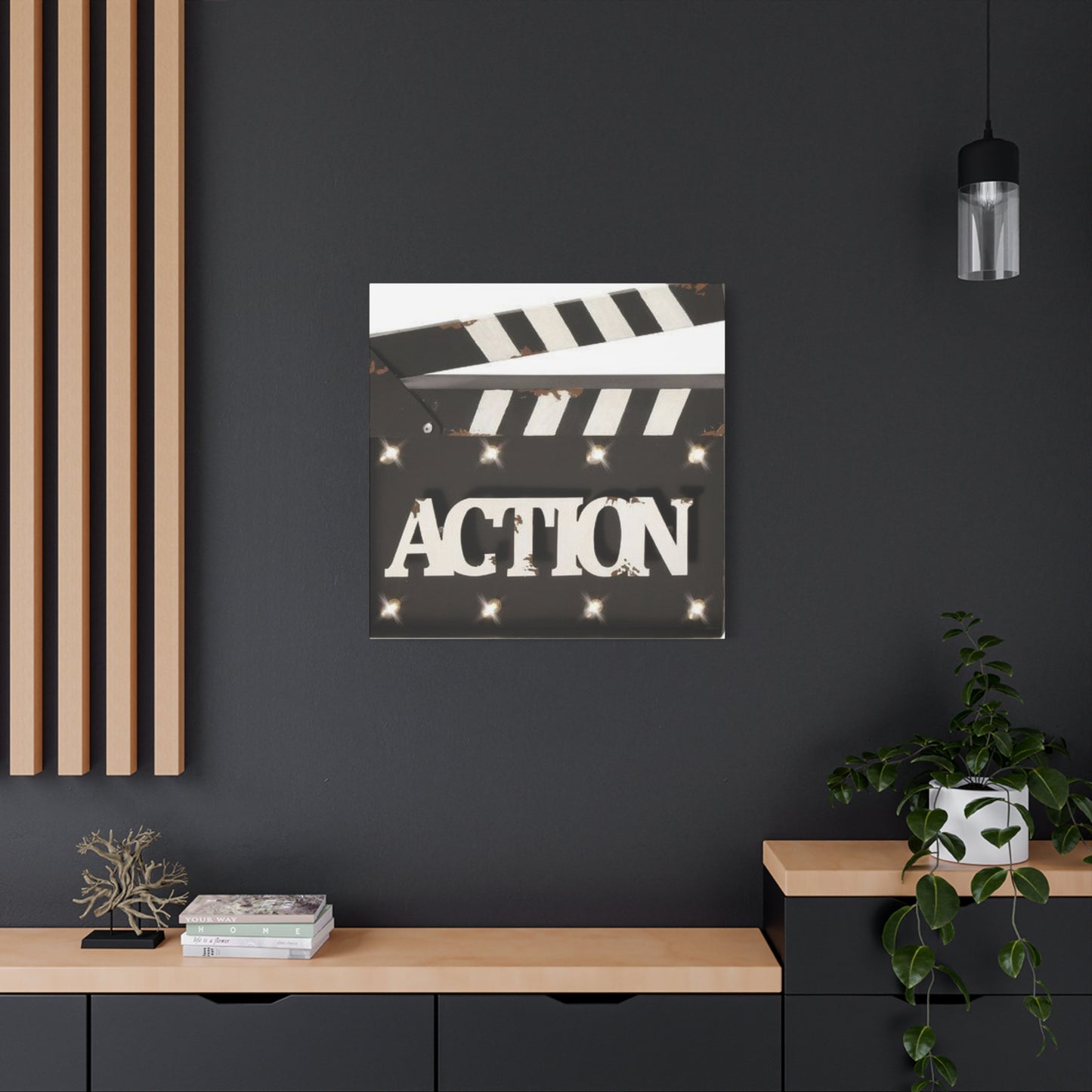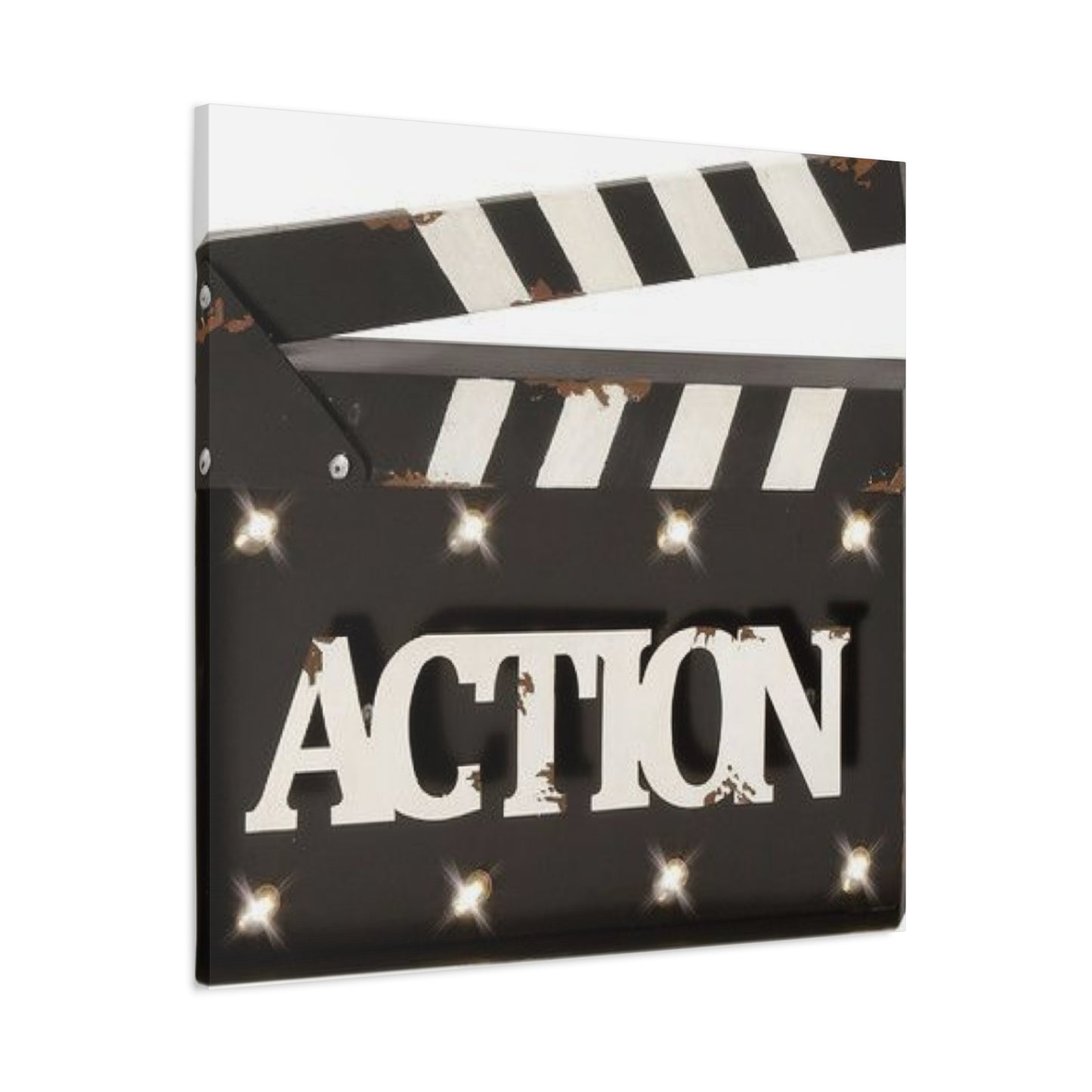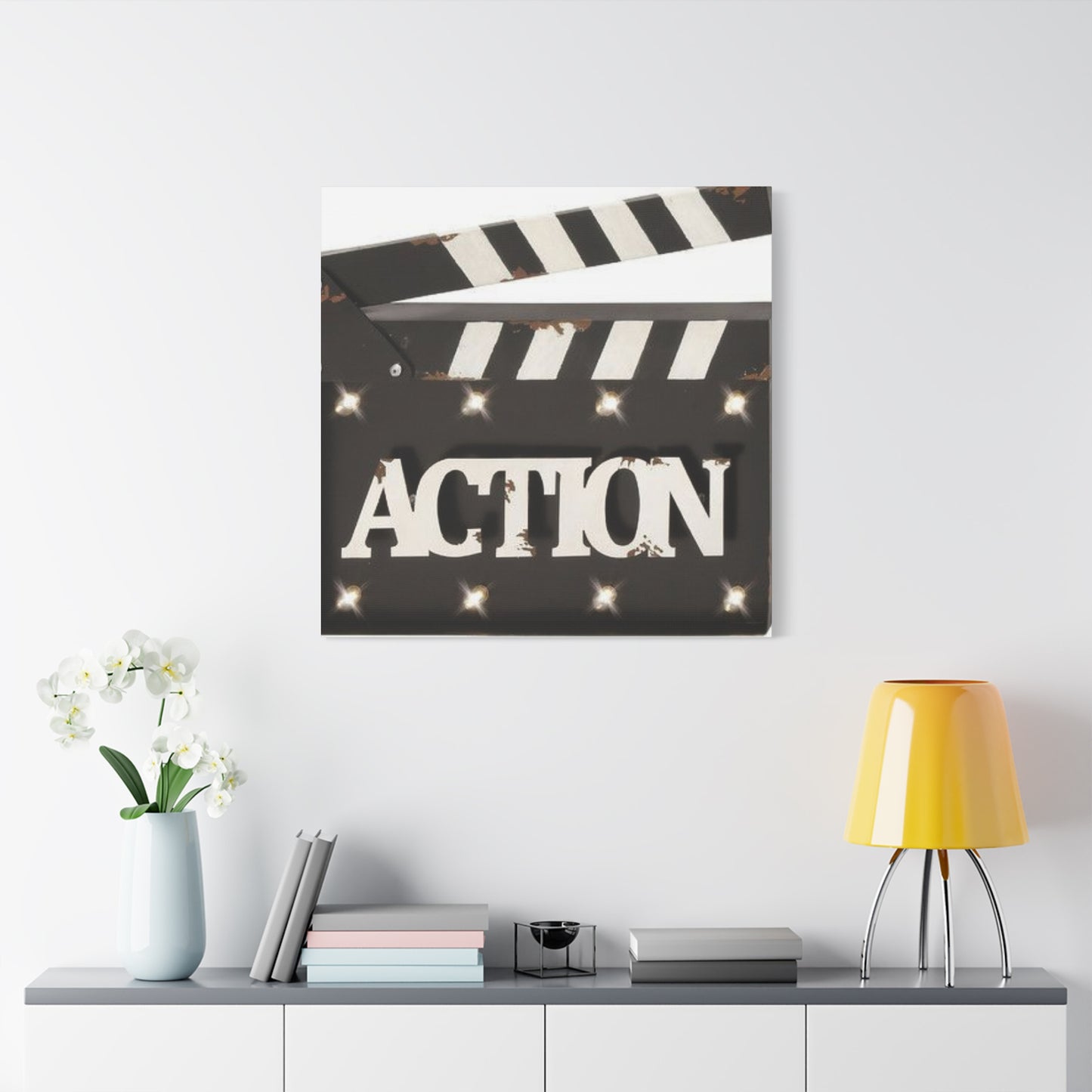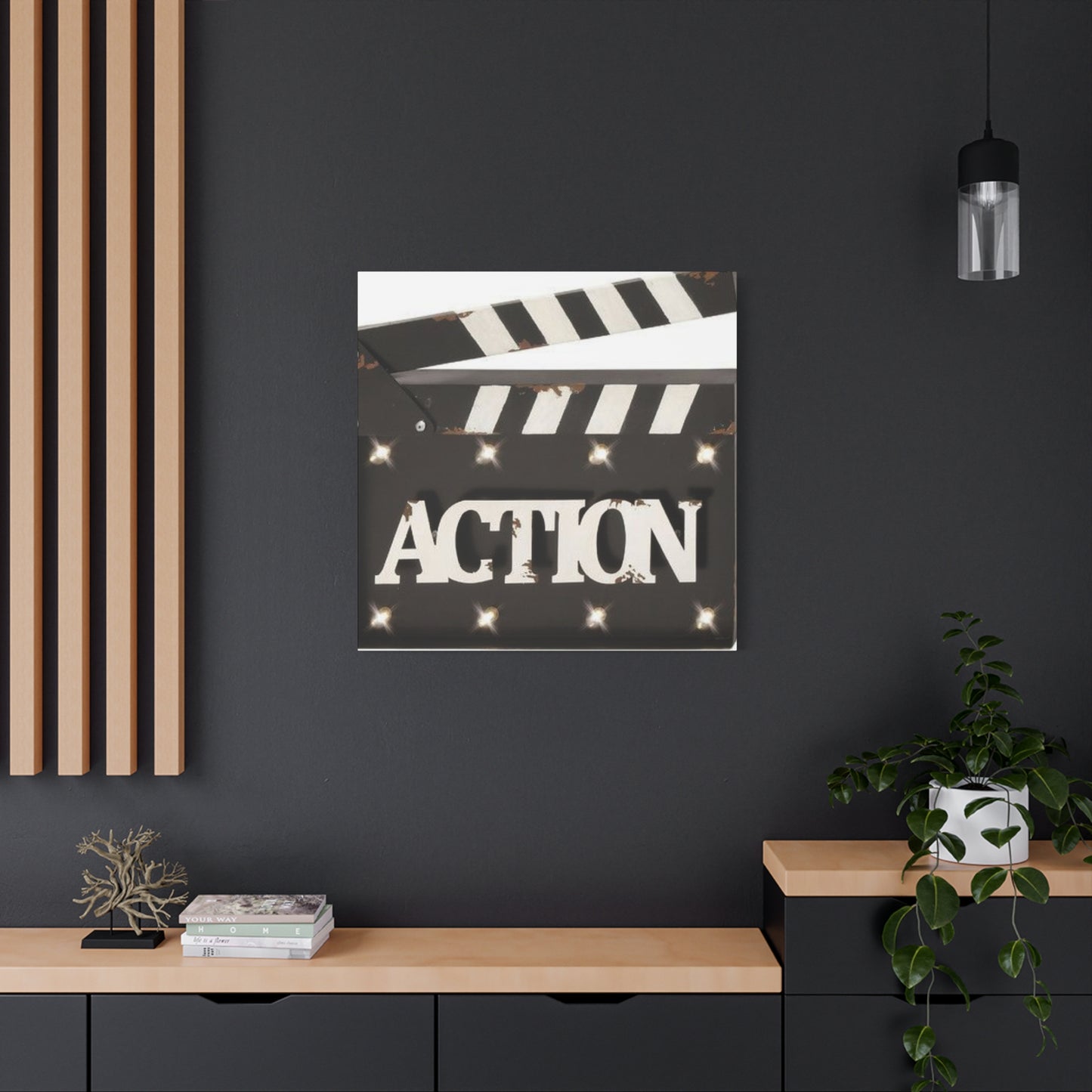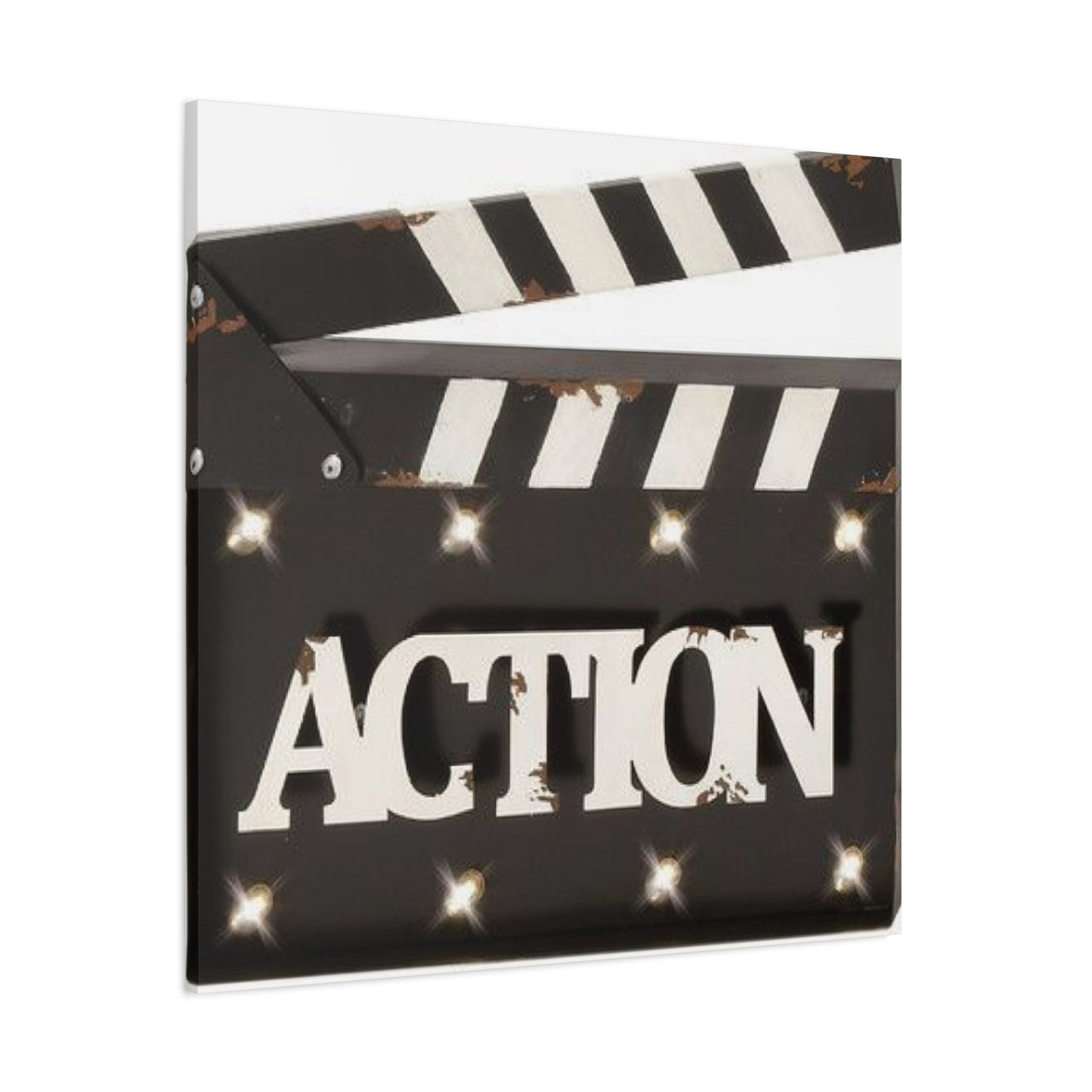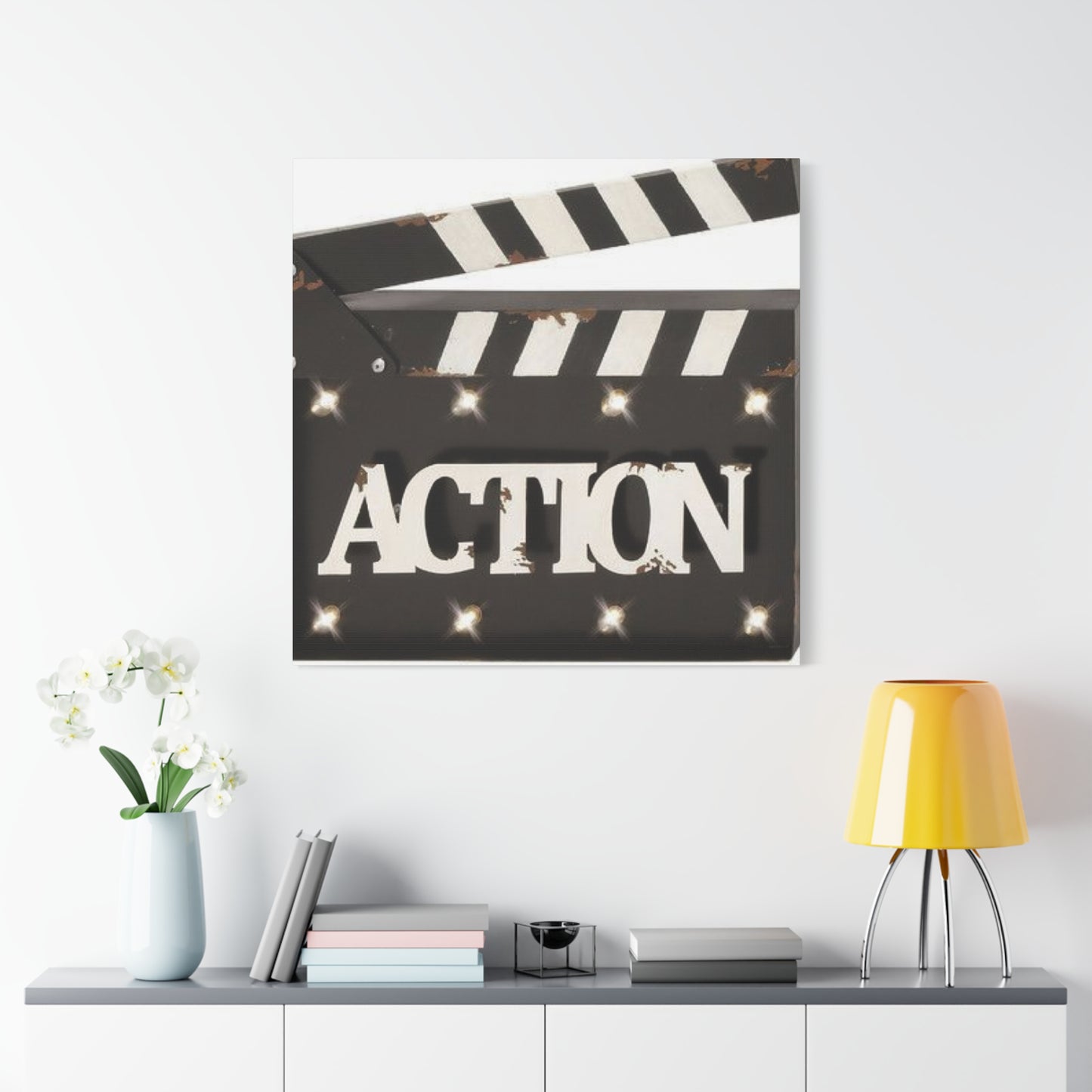The Ultimate Guide to Film Box Action Wall Art: From Man Cave Staple to Modernist Statement
In the pantheon of cinematic genres, action films hold a special, visceral place. They are spectacles of adrenaline, choreographed chaos, and larger-than-life heroism. They are the stories of impossible odds, explosive finales, and iconic one-liners that echo through pop culture for decades. For generations, the gateway to this world of high-octane excitement was the film poster, a single, static image tasked with capturing the kinetic energy of a two-hour thrill ride. Today, this art form has transcended the lobby of the local multiplex and found a new, celebrated home on our walls. Film box wall art, particularly from the action genre, has evolved from a niche collectible for hardcore fans into a sophisticated and dynamic tool for interior design.
This is more than just tacking up a poster from your favorite movie. It's about curating a personal gallery that speaks to your passions. It's about understanding how the dramatic composition of a Die Hard poster can inject energy into a quiet office, or how the sleek, neo-noir aesthetic of John Wick can serve as the perfect statement piece in a minimalist living room. It's a design movement that celebrates nostalgia, artistry, and the enduring power of cinematic storytelling.
This comprehensive guide will explore every facet of incorporating film box action art into your living spaces. We will delve into why these pieces are the quintessential decor for a modern man cave, how they can add drama and personality to any room, and how to mix them seamlessly with contemporary decor. We will dissect iconic scenes immortalized in poster form, offer practical advice on framing and building the perfect gallery wall, and navigate the exciting world of vintage versus modern styles. Whether you're a lifelong movie buff looking to pay homage to your heroes, a design enthusiast searching for a unique focal point, or someone looking for the perfect gift for the cinephile in your life, this is your definitive roadmap to the thrilling world of film box action art. Prepare to transform your space and let the magic of the movies leap from the screen to your walls.
The Best Film Box Action Art for Man Caves
The concept of the "man cave" is a sanctuary—a space dedicated to hobbies, relaxation, and personal expression, free from the shared aesthetic compromises of a home's main living areas. It is here that personal passions can be displayed proudly, and for millions, that passion is the action movie. Film box action art is not merely decoration for this space; it is the very wallpaper of its soul, setting a tone of strength, nostalgia, and unapologetic cool.
The Psychology of Action in a Personal Space
Why does action movie art resonate so strongly in a man cave? It taps into primal themes of heroism, perseverance, and adventure. The image of John McClane, grimy but determined, crawling through a ventilation shaft in the Die Hard poster is a visual metaphor for overcoming adversity. The stoic, cybernetic gaze of Arnold Schwarzenegger in The Terminator poster represents unstoppable force and singular focus. These are not just pictures of actors; they are icons of archetypes that have inspired and entertained for decades. Hanging these images is a way of surrounding oneself with the spirit of these characters—a daily reminder of resilience and grit.
Essential Genres and Titles for the Ultimate Man Cave
A well-curated man cave gallery wall should be a tour through the annals of action cinema. The key is to blend different eras and styles to create a rich tapestry of cinematic history.
-
The 80s Action Gods: This is the foundational pillar. The 1980s were the golden age of the muscle-bound hero, and the poster art was as bombastic as the films themselves. Look for the iconic, painted artwork of posters for Predator, featuring a heavily armed Arnold and his team against a jungle backdrop, or Sylvester Stallone as John Rambo in First Blood Part II, brandishing a bow with explosive-tipped arrows. The art by legends like Drew Struzan and Renato Casaro defined this era, with their hyper-realistic yet romanticized portraits of heroes. These pieces scream nostalgia and are instant conversation starters.
-
The Sci-Fi Action Epics: This sub-genre offers some of the most visually stunning artwork available. The original trilogy posters for Star Wars are must-haves, with their complex montages of heroes, villains, and starships promising galactic adventure. The gritty, futuristic dystopia of Blade Runner or the terrifying biomechanical horror of the Alien poster can add a darker, more cerebral tone to the collection. These posters explore not just physical conflict but also grand ideas about technology, humanity, and the future.
-
The Martial Arts Masters: No action collection is complete without paying homage to the legends of martial arts. The raw energy of a Bruce Lee poster, particularly the iconic yellow-jumpsuit image from Game of Death, is pure kinetic power. The acrobatic brilliance of Jackie Chan or the stoic intensity of Jet Li in posters for Hong Kong classics like Police Story or Once Upon a Time in China bring an international flair and celebrate the artistry of physical performance.
-
The Modern-Day Mavericks: To keep the space feeling current, it's crucial to include modern classics. The minimalist, graphically striking posters for the John Wick series, often featuring Keanu Reeves against a stark, neon-lit background, are paragons of modern action style. Similarly, the chaotic, beautifully rendered mayhem of Mad Max: Fury Road posters or the gritty, grounded realism of The Dark Knight’s promotional art demonstrate the evolution of the genre's visual language.
Beyond the Poster: Medium and Presentation
To truly elevate the man cave, think beyond the standard paper poster. Consider printing these iconic images on alternative materials. A canvas print can give a classic painted poster, like that for Conan the Barbarian, a more painterly, fine-art feel. Metal prints, with their glossy finish and vibrant color reproduction, can make the futuristic sheen of a Terminator 2: Judgment Day poster pop with incredible intensity. For a truly premium look, acrylic prints offer unparalleled depth and luminosity, making them perfect for a centerpiece like the Avengers: Endgame theatrical poster. By thoughtfully selecting the films and the medium, film box action art can transform a simple room into a powerful, personal shrine to cinema's most explosive genre.
How Film Box Wall Art Adds Drama to Any Room
While perfectly at home in a dedicated man cave or home theater, the power of film box action art should not be confined to these spaces. When used thoughtfully, these prints can inject a potent dose of drama, energy, and narrative intrigue into any room of the house, from a home office to a living room or even a hallway. The key lies in understanding the inherent artistic principles at play in their design.
The Art of Cinematic Composition
Movie posters are masterclasses in visual storytelling and dramatic composition. They are designed to grab your attention from across a lobby and convey emotion, conflict, and stakes in a single glance. This inherent drama is a powerful tool for interior design.
-
Dynamic Lines and Movement: Action posters are rarely static. They are built on strong diagonal lines that create a sense of movement, tension, and instability. Think of the poster for The Matrix, where Neo’s body is bent back in an impossible arc, dodging bullets. The lines of his body and the trailing code create a powerful diagonal thrust that energizes the entire composition. Hung on a flat, static wall, this image introduces an immediate sense of motion and dynamism. A poster for Mission: Impossible - Ghost Protocol, featuring Tom Cruise clinging to the side of the Burj Khalifa, uses terrifying verticality and perspective to create a feeling of vertigo and high stakes.
-
High-Contrast Color and Light: The use of color in action movie posters is intentionally evocative. The stark contrast between light and shadow (chiaroscuro) is a classic technique to create drama. The poster for The Dark Knight, with Batman standing before a flaming bat symbol emblazoned on a skyscraper, uses the intense orange of the fire against the deep blues and blacks of the night to create a visually arresting and emotionally charged scene. The neon-drenched purples and blues of Blade Runner 2049 posters can introduce a moody, atmospheric color palette into a room that might otherwise be neutral. This strategic use of color can influence the mood of the entire space.
-
Emotional Focus: The Power of the Close-Up: Many action posters rely on an intense close-up of the protagonist's face. The determined stare of Sigourney Weaver as Ripley in the Aliens poster, the cold fury in Daniel Craig's eyes as James Bond in Skyfall, or the world-weary resolve of Harrison Ford in Raiders of the Lost Ark—these images are incredibly compelling. They draw the viewer in and create an immediate emotional connection. Placed in a study or home office, such a piece can be a source of inspiration and focus. In a living room, it becomes a powerful conversation piece, inviting guests to share their own feelings about the film and its hero.
Injecting Narrative into Your Space
A home should tell the story of its inhabitants. Film box art does this quite literally. A single poster contains a complete narrative arc in potential. A poster for Jurassic Park isn't just a picture of a dinosaur; it’s a promise of wonder, terror, and survival. A poster for Inception is a visual puzzle that hints at a complex world of dreams and corporate espionage.
By hanging these pieces, you are embedding stories into your walls. This transforms a passive space into an active one. A hallway is no longer just a corridor; it's a gallery of adventures waiting to be had. A living room is not just a place for seating; it’s a stage set for epic tales. This narrative quality makes a space feel more personal, curated, and infinitely more interesting than one decorated with generic abstract art. The drama isn't just in the image itself; it's in the world that image represents and the personal connection you have to it.
Film Box Action Prints as Statement Pieces
Every well-designed room needs a focal point—a "statement piece" that anchors the space, draws the eye, and immediately communicates the room's personality and style. While this role is often filled by a large painting, a unique piece of furniture, or an elaborate light fixture, a carefully chosen and well-presented film box action print can serve this purpose with unparalleled character and panache.
What Makes a Print a "Statement"?
Not every poster can be a statement piece. To truly command a room, the artwork must possess certain qualities:
-
Scale: Size is the most straightforward factor. A statement piece should be large enough to have a significant visual presence. Think bigger than a standard one-sheet poster. Opting for an oversized print, perhaps 40x60 inches or larger, transforms the image from a simple decoration into an architectural element of the room. A massive, wall-covering print of the iconic Saul Bass-designed poster for Vertigo (while not strictly action, its dramatic tension is palpable) or the epic battle montage from the Lord of the Rings: The Return of the King poster can dominate a wall and define the entire room's aesthetic.
-
Bold Graphic Design: Some of the most effective statement pieces are not photorealistic but graphically bold and artistically stylized. The poster for Quentin Tarantino's Pulp Fiction, with Uma Thurman lounging on a bed, smoking a cigarette, against a stark, pulpy novel-inspired background, is a masterwork of graphic design. Its limited color palette, strong typography, and retro-cool vibe make it an instant icon. Similarly, the minimalist designs from Mondo, a company famous for its artist-commissioned alternative movie posters, often reduce a film to its core visual essence, creating powerful and thought-provoking art. An Olly Moss poster for Die Hard, showing a single Zippo lighter flame against the dark silhouette of Nakatomi Plaza, is subtle yet incredibly potent.
-
Cultural Significance: A true statement piece sparks conversation. Choosing a poster for a film that is not just a personal favorite but a cultural touchstone adds another layer of depth. The poster for Jaws, with its terrifyingly simple image of the great white shark rising towards an unsuspecting swimmer, is one of the most recognizable images in cinematic history. Hanging it in a living room is a bold move that speaks to an appreciation for film history, suspense, and the art of the blockbuster. It’s a piece that everyone, regardless of their cinematic knowledge, will have a reaction to.
Placement and Lighting: Maximizing Impact
Where and how you display your statement print is just as important as the print itself.
-
The Anchor Wall: Place the piece on the main wall you see upon entering the room, such as the wall behind a sofa in a living room or behind the desk in a home office. This immediately establishes it as the room's centerpiece.
-
Give It Space: Don't crowd a statement piece. Allow for ample "negative space" around the frame. This visual breathing room tells the eye that this piece is important and deserves to be contemplated on its own.
-
Strategic Lighting: Proper lighting is crucial. A dedicated picture light or a track light angled towards the artwork will make it pop, highlighting its colors and details, especially in the evening. This elevates the print from a simple poster to a piece of gallery-worthy art.
By choosing a film box print with the right combination of scale, artistic merit, and cultural weight, and by displaying it with intent, you can create a powerful focal point that is not only visually stunning but also a profound expression of your personal story and passions.
Mixing Film Box Action Art with Modern Decor
One of the most common hesitations for design-conscious movie lovers is the fear that a film poster will clash with a clean, modern interior. The concern is that a busy, colorful poster for The Avengers might look juvenile or out of place in a sophisticated, minimalist living room. However, this juxtaposition can be the very source of a room's unique charm and personality. The secret is not to hide your passion but to integrate it with intention and style.
The Strategy of Contrast and Cohesion
Successfully blending film art with modern decor—be it minimalist, Scandinavian, or mid-century modern—revolves around creating a deliberate dialogue between the two styles.
-
Find a Common Color: This is the simplest and most effective technique. Look at the dominant colors in your chosen poster and echo them in the room's decor. If you have a poster for Mad Max: Fury Road, with its fiery oranges and deep desert blues, incorporate those colors through throw pillows, a rug, or smaller decorative objects. This creates a cohesive color story that ties the artwork to the space, making it feel intentional rather than accidental. The vibrant reds in the Akira poster could be matched with a single red accent chair in an otherwise monochrome room for a stunning visual pop.
-
Framing is Everything: The frame acts as the bridge between the artwork and your decor. To integrate a poster into a modern setting, opt for a simple, high-quality frame. A thin, black or white gallery frame is a versatile choice that feels clean and contemporary. For a warmer, mid-century modern look, a slim frame in a natural wood like oak or walnut works beautifully. A "floating frame," where the print is mounted with a gap between it and the frame, adds an extra layer of sophistication and makes the artwork appear to hover, lending it a museum-like quality. Avoid ornate, heavy frames that can feel dated and clash with modern sensibilities.
-
The "High/Low" Design Principle: In fashion, it's common to mix a designer handbag with a simple t-shirt. The same principle applies here. You can pair your "low-brow" passion (a movie poster) with "high-brow" design elements (a classic Eames lounge chair, a sleek marble coffee table). This contrast is what makes a space feel authentic and lived-in, not like a sterile showroom. The film poster injects personality and a human touch, preventing the modern decor from feeling cold or impersonal.
Creating a Balanced Composition
Balance is key to preventing the film art from overwhelming the space.
-
The Power of a Triptych: If one large poster feels too dominant, consider breaking up the image. A custom-printed triptych (one image split across three panels) of a panoramic scene, like the final battle in Avengers: Endgame or a wide shot of the Batmobile, can feel more like abstract art from a distance. This approach retains the cinematic theme while presenting it in a more contemporary format.
-
Integrate into a Gallery Wall: Instead of having a single poster stand alone, incorporate it into a larger gallery wall that includes other forms of art, such as abstract prints, personal photographs, and sketches. By surrounding the movie poster with more traditional art, you contextualize it as just one facet of your artistic taste. A poster for John Wick might hang next to a black-and-white architectural photograph and a minimalist line drawing, unified by their shared black frames.
The goal is to show that your love for action movies is part of a broader, well-rounded aesthetic. By applying basic design principles of color, framing, and balance, you can proudly display your favorite film box art in a way that enhances, rather than detracts from, your modern home.
Iconic Action Scenes Featured in Film Box Wall Art
While many film posters focus on a heroic portrait of the star, some of the most memorable and effective posters are those that dare to capture a single, iconic moment of action from the film itself. These pieces are more than just advertisements; they are dynamic freeze-frames of cinematic history, encapsulating the entire film's energy and spectacle in one image. Displaying these scene-specific prints is a tribute not just to the film, but to the specific moments that made our jaws drop and our hearts race.
The Art of the Action Tableau
Creating a compelling action scene on a static poster is an immense artistic challenge. The designer must convey movement, sound, and consequence without the benefit of time. Here are some legendary examples that achieved this with spectacular results:
-
The T-Rex Chase - Jurassic Park (1993): While the main teaser poster famously featured just the skeleton logo, a later theatrical poster brilliantly captured the film's most terrifying set piece. The image of the colossal T-Rex roaring in the rearview mirror of a Jeep, with the text "OBJECTS IN MIRROR ARE CLOSER THAN THEY APPEAR," is a stroke of genius. It uses a relatable, everyday experience and twists it into a moment of primordial terror. It perfectly conveys the film's blend of awe and horror, and the composition, forcing the viewer into the perspective of the hunted, is incredibly immersive.
-
The Rooftop Leap - The Matrix (1999): The promotional art for The Matrix had to communicate a new kind of action cinema. One of the most iconic images features Neo and Trinity, clad in black leather, leaping between skyscrapers, guns blazing, while a helicopter explodes in the background. This single image tells you everything you need to know: this is a world where the laws of physics are optional, the style is slick and futuristic, and the action is off the charts. The distorted perspective and green-tinted color palette further enhance the film's unique, reality-bending aesthetic.
-
The Truck Flip - The Dark Knight (2008): In a film full of unforgettable moments, the practical stunt of the Joker flipping an 18-wheeler end-over-end in the middle of a Gotham street stands out. A poster capturing this moment is pure, unadulterated spectacle. The image of the massive truck twisted vertically against the city skyline is a powerful symbol of the Joker's anarchic chaos disrupting the established order. It’s a poster that celebrates the incredible craftsmanship of the filmmaking process itself.
-
The Train Fight - Skyfall (2012): The opening sequence of Skyfall is one of the best in the James Bond franchise, culminating in Bond fighting a mercenary atop a speeding train. The poster that depicts this scene, with Bond adjusting his cufflink mid-combat, perfectly captures the character's essence: impossibly cool and composed even in the face of extreme danger. The blur of the landscape in the background conveys incredible speed, while Bond's calm demeanor provides the stylish focal point.
-
The "Witness Me!" Scene - Mad Max: Fury Road (2015): George Miller’s masterpiece is a non-stop chase, and its artwork had to reflect that frenetic energy. Many posters feature the War Boys, chrome-sprayed and fanatical, launching themselves from one vehicle to another amidst a maelstrom of sand and fire. These images are not just action scenes; they are bizarre, beautiful, and utterly unique works of art, capturing the film's operatic, post-apocalyptic vision.
Hanging one of these scene-specific prints is a choice that speaks to a deeper level of cinephilia. It shows an appreciation for the specific moments of cinematic magic, the unforgettable set pieces that define a film and elevate it from a simple action movie to a legendary work of art.
Film Box Wall Art: A Must-Have for Movie Buffs
For the true movie buff, a home is more than just a living space; it's a physical extension of their passion. Bookshelves are lined with biographies of directors and "making of" tomes. Display cases house prized collectibles. And, increasingly, the walls are adorned with film box art. For the cinephile, this art form is not merely decorative. It's a fundamental part of their identity, a visual language that communicates their tastes, their memories, and their profound love for the medium of film.
More Than Decoration: It's Curation
A movie buff doesn't just buy a poster; they curate a collection. Each piece is chosen with purpose and tells a part of their personal cinematic story.
-
The Formative Film: Everyone has that one movie, usually discovered in their youth, that ignited their passion for cinema. For many, it's an action film. It could be the wonder of seeing Star Wars for the first time, the thrill of Raiders of the Lost Ark, or the mind-bending spectacle of Terminator 2. Hanging the poster for this formative film is a tribute to that origin story. It’s a piece of personal nostalgia, a daily reminder of the moment a hobby became a passion.
-
The Auteur's Signature: A dedicated cinephile often follows directors, not just actors or franchises. They appreciate the distinct visual style and thematic concerns of an auteur. A wall could be dedicated to the works of a single director, telling a story through their filmography. Imagine a series of prints showcasing the evolution of James Cameron, from the gritty sci-fi horror of The Terminator and Aliens to the grand, technologically groundbreaking spectacle of Avatar. This approach displays an appreciation for the artist behind the camera.
-
Celebrating the Craft: Movie buffs love the details. They appreciate the artistry that goes into every frame. This is where alternative movie posters, often from galleries like Mondo or Bottleneck, become essential. These limited-edition, artist-commissioned prints often eschew the traditional Hollywood marketing image in favor of a more symbolic or artistic interpretation of the film. A poster might focus on a key prop, a subtle visual motif, or an abstract representation of the film's central theme. Collecting and displaying these pieces demonstrates a sophisticated understanding of film as an art form and an appreciation for the graphic design artists who celebrate it.
The Ultimate Conversation Starter
There is no better icebreaker for a movie buff than a guest pointing to a poster and saying, "Oh, I love that movie!" or, even better, "What film is that from?" Each poster is a launchpad for conversation, a chance to share opinions, recount favorite scenes, and debate the merits of a film's ending. A curated wall of film box art turns a home into a social space where passions can be shared and new cinematic discoveries can be made. It’s a way of wearing your heart on your sleeve—or, in this case, on your wall.
For the movie buff, film box wall art is the ultimate expression of their identity. It’s a way to live and breathe cinema, to surround themselves with the stories and characters that have shaped them, and to create a home that is a living, breathing tribute to the magic of the movies. It is, without question, a must-have.
Customizing Your Space with Film Box Action Posters
The journey into the world of film box art doesn't end with purchasing a standard-issue poster. For those who want to create a truly unique and personalized space, the realm of customization offers endless possibilities. Moving beyond off-the-shelf products allows you to tailor the size, material, and even the artwork itself to perfectly match your vision, transforming a simple piece of decor into a bespoke work of art.
Exploring Custom Printing and Materials
The material on which an image is printed can dramatically alter its look and feel. While traditional semi-gloss poster paper is the classic choice, modern printing technology has opened up a world of exciting alternatives.
-
Canvas Prints: Printing a film poster on stretched canvas instantly elevates it. The subtle texture of the canvas can soften the image, giving painted posters, like those by the legendary Drew Struzan for Indiana Jones or Back to the Future, a more authentic, "fine art" quality. Canvas prints are also durable and eliminate the glare that can be an issue with framed glass, making them a great choice for brightly lit rooms. They arrive ready to hang, providing a clean, frameless look that works well in modern interiors.
-
Metal (Aluminum) Prints: For artwork that needs to pop with vibrant color and sharp detail, metal prints are an exceptional choice. The image is infused directly onto a sheet of aluminum, resulting in a glossy, luminous finish with incredible depth. This medium is perfect for modern, CGI-heavy films like Tron: Legacy or Blade Runner 2049, as it enhances their sleek, futuristic aesthetic. The metallic sheen can make explosions seem hotter, laser blasts brighter, and neon cityscapes deeper. They are also incredibly durable, waterproof, and scratch-resistant, making them a long-lasting investment.
-
Acrylic Prints: For the ultimate premium look, acrylic prints are unparalleled. The image is printed on photo paper and then face-mounted onto a thick sheet of polished acrylic. This process gives the image a near 3D effect, with extraordinary color saturation and clarity. The light refracts through the acrylic block, making the image appear as if it's backlit. An acrylic print of the starfield from a Star Trek poster or the deep space of 2001: A Space Odyssey can be a breathtaking centerpiece.
-
Wood Prints: For a more rustic, organic feel, printing a poster directly onto a sheet of wood is a unique option. The natural grain of the wood shows through the lighter areas of the image, adding texture and warmth. This style can work surprisingly well for action films with a natural or historical setting, such as Gladiator, The Last of the Mohicans, or even the jungle environments of Predator. It's a way to blend cinematic passion with a more earthy, naturalistic decor style.
Commissioning Unique Artwork
The pinnacle of customization is commissioning an artist to create a one-of-a-kind piece. Many talented graphic designers and illustrators specialize in creating alternative movie posters. Platforms like Etsy, Behance, and Instagram are treasure troves of artists with unique styles.
You could commission an artist to:
-
Create a minimalist version of a poster for a favorite film that has a naturally busy design.
-
Design a "set" of posters for a film series in a unified, consistent style, even if the official posters were inconsistent.
-
Incorporate a personal element, such as designing a poster for a favorite movie that subtly includes the likeness of you or a loved one.
-
Reimagine a poster in a completely different artistic style, such as an Art Deco Die Hard or a Japanese Ukiyo-e woodblock print style for Kill Bill.
This approach ensures that the art on your wall is not just a reflection of your taste in film, but a unique piece that exists nowhere else in the world, making your space a true gallery of personal expression.
Using Film Box Wall Art to Create a Cinematic Vibe
The right film box art can do more than just decorate a room; it can completely transform its atmosphere, creating a truly cinematic vibe that makes you feel like you've stepped into your own private theater or onto a film set. This immersive experience is achieved by thinking beyond the print itself and considering how it interacts with the surrounding environment, particularly lighting, sound, and decor.
The Power of Thematic Lighting
Lighting is one of the most powerful tools in a filmmaker's arsenal, and it can be just as impactful in your home. By coordinating your room's lighting with your chosen wall art, you can amplify its mood and theme.
-
Color-Changing LEDs: Smart LED light strips (like Philips Hue or Govee) are a game-changer for creating a cinematic atmosphere. Imagine a gallery wall of posters from the Blade Runner and Cyberpunk 2077 universe. With smart LEDs, you can bathe the wall in the signature neon purples, blues, and magentas from those worlds, instantly immersing the space in a cyberpunk aesthetic. For a Mad Max: Fury Road piece, you could program a fiery orange and yellow lighting scheme. The ability to change the color to match the dominant palette of your artwork creates a dynamic and cohesive environment.
-
Spotlighting and Dimming: In a home theater or dedicated media room, use spotlights or track lighting to specifically illuminate your posters, just as a gallery would light a painting. Install dimmer switches for your main room lights. When it's time to watch a movie, you can dim the ambient light and leave the posters softly illuminated, creating the classic, magical feel of a movie palace just before the curtains part.
Soundscaping and Thematic Decor
To take the cinematic vibe to the next level, consider how sound and other decor elements can support your visual theme.
-
Thematic Soundtracks: With smart speakers, it's easy to create playlists that match the mood of your art. If your room is decorated with posters from classic spy thrillers like the James Bond or Mission: Impossible series, having a playlist of sweeping, orchestral spy movie scores playing softly in the background can complete the fantasy.
-
Furniture and Textures: The furniture you choose can also enhance the theme. A room dedicated to classic film noir posters, with their high-contrast black-and-white photography, would be perfectly complemented by leather club chairs, dark wood furniture, and metallic accents like a chrome bar cart. A space celebrating sci-fi epics like Dune or Star Wars could feature sleek, minimalist furniture and textiles with interesting, futuristic textures.
-
Creating a "Lobby" Experience: In a hallway or entryway leading to your main viewing area, create a "cinema lobby" feel. Line the walls with a series of framed posters, use subtle uplighting, and perhaps even place a vintage-style popcorn machine in a corner. This creates a sense of transition and anticipation, signaling to guests (and to yourself) that they are entering a space dedicated to the love of film.
By thoughtfully orchestrating light, sound, and decor around your film box wall art, you move beyond simple decoration and engage in a form of environmental storytelling. You create a cohesive, immersive space that doesn't just display your favorite movies—it allows you to live inside their world.
Displaying Film Box Action Art in Small Spaces
Living in an apartment, dorm room, or a home with limited wall real estate doesn't mean you have to sacrifice your passion for film box art. In fact, small spaces often benefit the most from the punch of personality and visual interest that a well-chosen print can provide. The key is to be strategic, clever, and to think vertically.
Maximizing Vertical Real Estate
When floor space is at a premium, your walls are your greatest asset.
-
The Vertical Gallery: Instead of a sprawling horizontal gallery wall, go vertical. A tall, narrow strip of wall, often found between two doors or windows, is the perfect spot for a column of smaller, uniformly framed prints. You could display a series of posters from a single franchise (John Wick 1, 2, 3 & 4) or from a favorite actor's filmography, creating a "film strip" effect that draws the eye upward and makes the ceiling feel higher.
-
The Art Ledge: Floating shelves or narrow picture ledges are a small-space dweller's best friend. They require minimal wall drilling and offer maximum flexibility. You can display a collection of framed prints, overlapping them slightly to create a layered, casual look. This allows you to easily rotate your collection without constantly putting new holes in the wall. You can mix in smaller collectibles, books, or plants on the ledge to create a dynamic and personal vignette.
Smart Placement in Unexpected Places
Think beyond the living room. Any small nook can be transformed into a mini-gallery.
-
The Home Office Corner: The wall space above your desk is prime real estate. Hanging an inspiring action poster—perhaps of a hero overcoming impossible odds—can be a great source of motivation during the workday.
-
The Kitchen or Dining Nook: Why not add some flavor to your dining area? A stylized, graphically interesting poster can be a fantastic conversation piece in a breakfast nook or on a small kitchen wall. A food-themed film poster, like the retro-cool art for Pulp Fiction’s "Big Kahuna Burger," could be a fun, thematic choice.
-
The Hallway Gallery: Long, narrow hallways can feel boring and utilitarian. Transform them into a cinematic journey by lining one or both walls with a series of posters. This turns a simple passageway into an engaging experience.
-
The "Leaning" Technique: For a relaxed, bohemian vibe that requires no hooks or nails, lean a large framed print against a wall, either on the floor or on top of a credenza or bookshelf. This works particularly well for a single, oversized statement piece and adds a touch of effortless style.
Choosing the Right Art for the Space
In a smaller room, the artwork itself matters.
-
Mind the Palette: If your space is already small, a very dark or visually cluttered poster can make it feel even more cramped. Consider posters with a lighter background or a more minimalist design. Art with a lot of white space can help the room feel more open and airy.
-
Size Matters: While a single large piece can sometimes make a small room feel grander by creating a strong focal point, a collection of smaller prints (e.g., 8x10 or 11x17 inches) often provides more flexibility and prevents any one piece from overwhelming the space.
By using these clever strategies, you can proudly display your love for action cinema, proving that you don't need a sprawling mansion to create a home with blockbuster personality.
Top Action Film Posters for Film Box Wall Art
While taste is subjective, some film posters have achieved an iconic status that transcends personal preference. They are masterworks of design, cultural touchstones, and essential additions to any serious collection. This curated list represents some of the best-of-the-best, categorized by era and style, perfect for anyone looking to start or expand their film box wall art gallery.
The Classics (1970s-1980s)
This era was defined by breathtaking, hand-painted artwork that romanticized its heroes and promised epic adventure.
-
Star Wars: Episode IV - A New Hope (1977 - Style 'A' by Tom Jung): Luke Skywalker holding a shining lightsaber aloft, Princess Leia at his side, and the menacing visage of Darth Vader looming in the background. It's the quintessential promise of a galactic space opera.
-
Raiders of the Lost Ark (1981 - by Richard Amsel): Harrison Ford as Indiana Jones, whip at the ready, against a montage of action-packed vignettes. It perfectly captures the film's pulp-adventure spirit.
-
Blade Runner (1982 - by Drew Struzan): A stunning, moody piece that establishes the film's futuristic noir aesthetic, with Deckard front and center amidst the neon and perpetual rain of 2019 Los Angeles.
-
First Blood (1982): A simple but powerful image of a haunted Sylvester Stallone as John Rambo, a quiet storm of untapped violence, set against a dark forest backdrop. It hints at the psychological depth beneath the action.
-
The Terminator (1984): Arnold Schwarzenegger, clad in leather and sporting his iconic sunglasses, with the red glow of his cybernetic eye cutting through the darkness. It’s a terrifying and impossibly cool image that defined a decade of action.
-
Die Hard (1988): The quintessential action hero poster. Bruce Willis as John McClane, looking exhausted but resolute, holding a gun, with the exploding Nakatomi Plaza behind him.
Conclusion
Film box action art has evolved far beyond its roots as a man cave staple to become a dynamic, versatile form of modernist expression that appeals to a wide range of design sensibilities. By transforming iconic movie posters, vintage film boxes, and action-packed imagery into captivating wall art, this style blends nostalgia with contemporary aesthetics, creating spaces that celebrate cinematic culture in bold and creative ways. Whether you’re a dedicated film buff or simply appreciate striking visual storytelling, film box action art brings energy, personality, and a touch of drama to your interiors.
At its core, film box action art is about storytelling—capturing the excitement, emotion, and artistry of film through compelling visuals. These pieces often feature iconic characters, dramatic scenes, and vibrant colors that instantly draw the eye and spark conversation. As a result, they serve as perfect focal points in rooms designed for relaxation, entertainment, or inspiration. From man caves and home theaters to urban lofts and modern apartments, film box art adapts effortlessly, bridging the gap between retro charm and sleek sophistication.
What makes this art form particularly appealing is its ability to evoke personal memories and cultural touchstones while fitting into contemporary design schemes. The use of bold typography, graphic contrasts, and dynamic compositions allows film box action art to resonate not just with fans of specific movies but also with lovers of visual culture and design innovation. These artworks invite viewers to relive favorite cinematic moments or discover new narratives, enriching the atmosphere of any space.
Moreover, film box action art offers tremendous flexibility in scale and medium. From framed prints and canvases to mixed media and 3D installations, these pieces can be customized to suit your space and style preferences. Curating a collection or gallery wall featuring different genres, eras, or directors can create a layered, eclectic environment that showcases both your tastes and creativity.
In conclusion, film box action art is no longer just a niche décor trend—it is a vibrant art form that celebrates the power of cinema while enhancing modern living spaces with bold visuals and cultural depth. Whether you’re designing a dedicated media room or adding flair to your everyday environment, this style offers endless possibilities to express your passion and elevate your home’s aesthetic. Embrace the drama, color, and nostalgia of film box art and let it become a defining statement of your personal style.

















